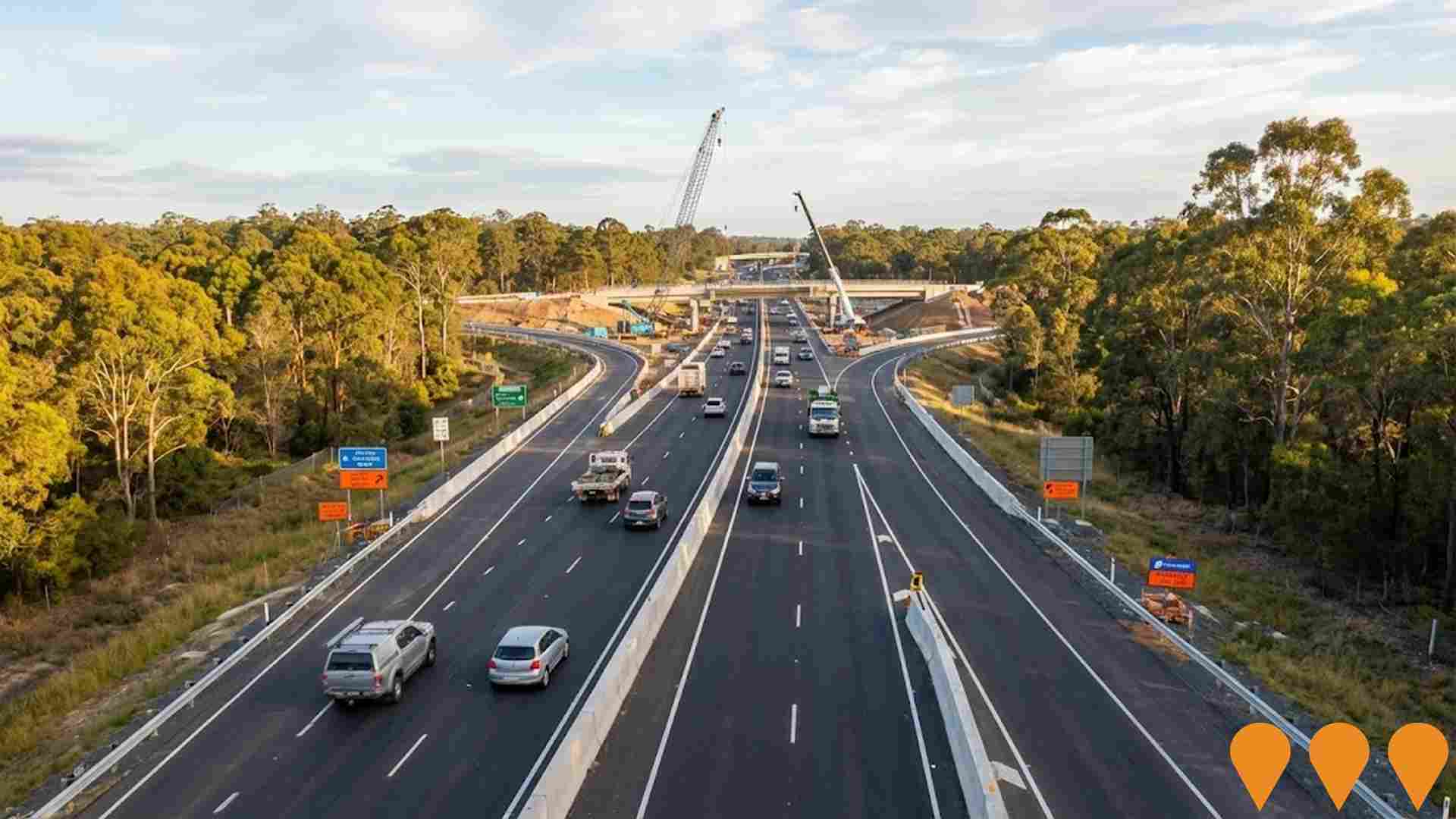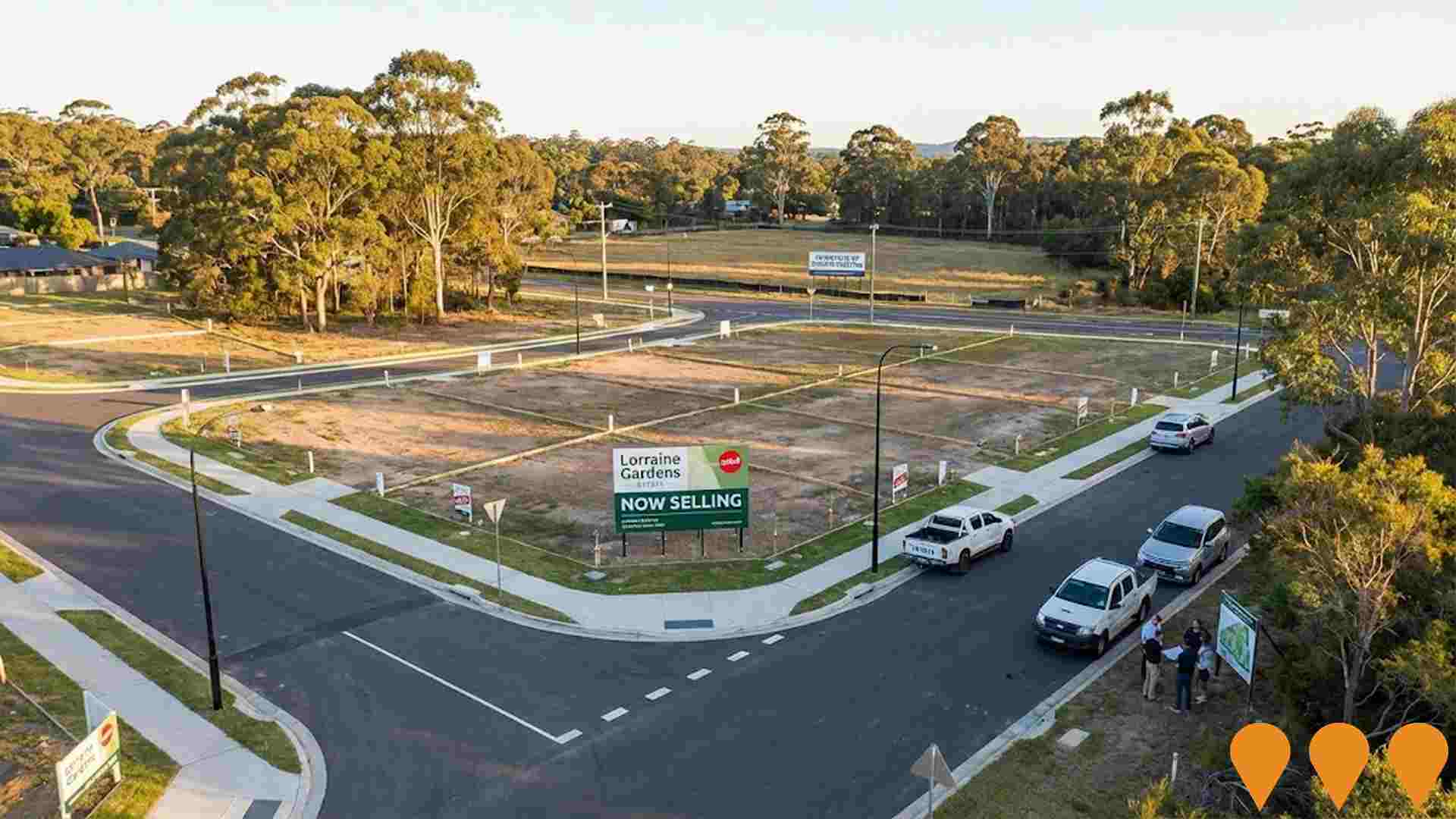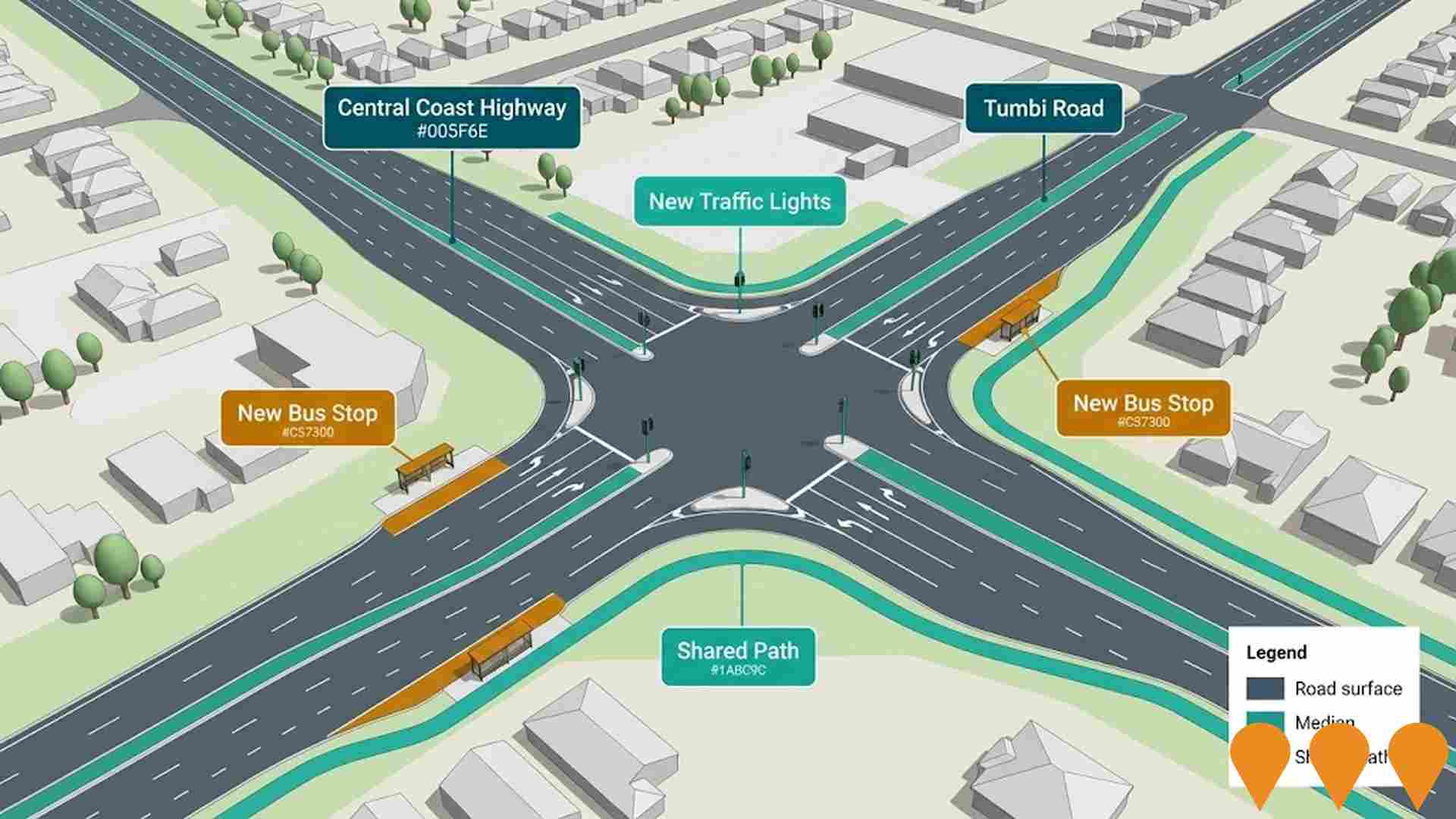Chart Color Schemes
est. as @ -- *
ABS ERP | -- people | --
2021 Census | -- people
Sales Activity
Curious about local property values? Filter the chart to assess the volume and appreciation (including resales) trends and regional comparisons, or scroll to the map below view this information at an individual property level.
Find a Recent Sale
Sales Detail
Population
An assessment of population growth drivers in Chittaway Bay - Tumbi Umbi reveals an overall ranking slightly below national averages considering recent, and medium term trends
Chittaway Bay - Tumbi Umbi's population, as of Aug 2025, is around 16,756. This figure reflects an increase of 750 people since the 2021 Census, which reported a population of 16,006. The change is inferred from ABS estimates showing a resident population of 16,354 in June 2024 and an additional 288 validated new addresses since the Census date. This results in a density ratio of 683 persons per square kilometer, roughly inline with averages across locations assessed by AreaSearch. The area's growth rate of 4.7% since the 2021 census exceeded both the SA4 region (3.1%) and SA3 area, positioning it as a growth leader in the region. Overseas migration contributed approximately 55.6% of overall population gains during recent periods.
AreaSearch is adopting ABS/Geoscience Australia projections for each SA2 area, released in 2024 with 2022 as the base year. For areas not covered by this data, AreaSearch utilises NSW State Government's SA2 level projections released in 2022 using 2021 as the base year. Growth rates by age group from these aggregations are applied to all areas for years 2032 to 2041. Based on latest population numbers, the area is anticipated to grow by 699 persons to 2041, recording a gain of 1.8% in total over the 17-year period.
Frequently Asked Questions - Population
Development
Recent residential development output has been above average within Chittaway Bay - Tumbi Umbi when compared nationally
Chittaway Bay - Tumbi Umbi has seen approximately 73 new home approvals per year over the past five financial years, totalling 369 homes. As of FY26, 16 approvals have been recorded. On average, each dwelling constructed between FY21 and FY25 accommodates around 1.1 new residents annually, indicating a balanced supply and demand market with stable conditions. The average construction cost value for new homes is $541,000.
This financial year has seen $6.8 million in commercial approvals, suggesting limited focus on commercial development. Compared to Greater Sydney, Chittaway Bay - Tumbi Umbi's new home approvals per capita are comparable, supporting market stability aligned with regional patterns. New developments consist of 90% standalone homes and 10% attached dwellings, maintaining the area's low-density character focused on family homes.
With approximately 228 people per approval, Chittaway Bay - Tumbi Umbi reflects a low-density population. By 2041, the area is forecasted to gain 297 residents. Given current construction levels, housing supply should meet demand adequately, creating favourable conditions for buyers and potentially enabling growth beyond current forecasts.
Frequently Asked Questions - Development
Infrastructure
Chittaway Bay - Tumbi Umbi has moderate levels of nearby infrastructure activity, ranking in the top 50% nationally
Eleven projects have been identified by AreaSearch as likely impacting the area, with key ones including Berkeley Vale Industrial Estate Expansion, Lorraine Gardens Estate, Berkeley Vale Private Hospital & Medical Precinct, and M1 Pacific Motorway Tuggerah to Doyalson Widening. The following list details those most relevant.
Professional plan users can use the search below to filter and access additional projects.
INFRASTRUCTURE SEARCH
 Denotes AI-based impression for illustrative purposes only, not to be taken as definitive under any circumstances. Please follow links and conduct other investigations from the project's source for actual imagery. Developers and project owners wishing us to use original imagery please Contact Us and we will do so.
Denotes AI-based impression for illustrative purposes only, not to be taken as definitive under any circumstances. Please follow links and conduct other investigations from the project's source for actual imagery. Developers and project owners wishing us to use original imagery please Contact Us and we will do so.
Frequently Asked Questions - Infrastructure
Berkeley Vale Private Hospital & Medical Precinct
Berkeley Vale Private Hospital & Medical Precinct is an established 50 bed private hospital campus in Berkeley Vale, providing rehabilitation, general medical and mental health services for the Central Coast community. :contentReference[oaicite:0]{index=0} The campus has progressively expanded, including a new mental health unit extension and refurbishment of existing beds to create dedicated mental health facilities with upgraded inpatient and support areas. :contentReference[oaicite:1]{index=1} The hospital is owned and operated by Ramsay Health Care and has been part of the Ramsay network since 2001, with the original hospital officially opened in 1990, forming the core of a broader local health and medical precinct in and around Lorraine Avenue. :contentReference[oaicite:2]{index=2} Within the internal category framework this project is classified under Health & Medical - Hospitals, reflecting its role as a private acute and rehabilitation facility rather than a general residential development. :contentReference[oaicite:3]{index=3} This record updates the earlier proposed greenfield concept to align with the current operating hospital, ownership and contact details while retaining the approximate value and catchment assumptions from the original infrastructure entry. :contentReference[oaicite:4]{index=4}

Mardi Water Treatment Plant Upgrade
Central Coast Council's $82.5 million upgrade of the Mardi Water Treatment Plant will increase capacity to meet growing demand and improve drinking water quality and reliability for over 210,000 residents and businesses across the Central Coast. Works include a new Dissolved Air Flotation clarifier, additional flocculation tanks, upgraded chemical dosing systems, and enhanced sludge handling facilities.
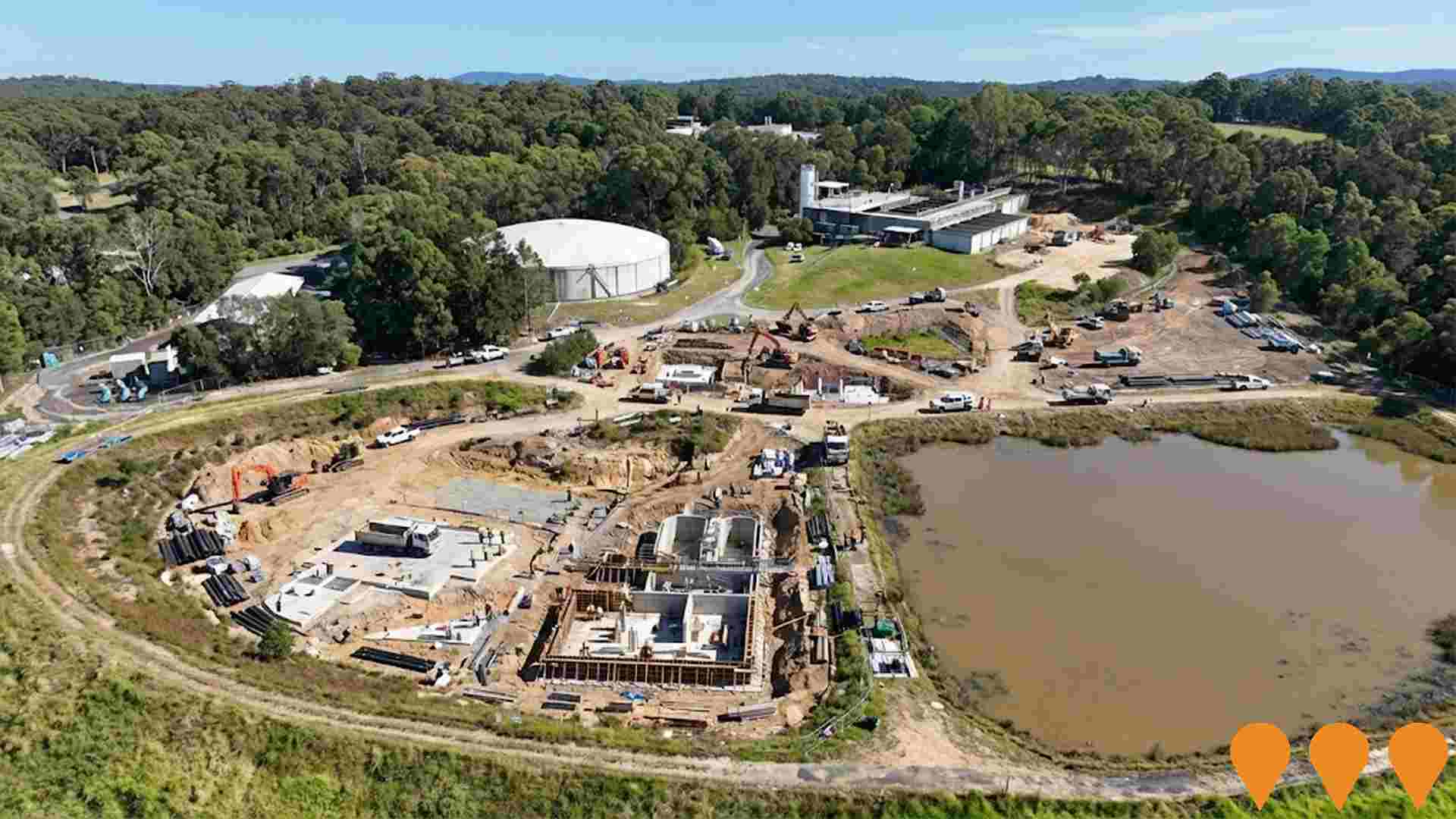
Tuggerah Precinct Activation - Westfield Redevelopment
A transformational $2.8 billion mixed-use redevelopment of Westfield Tuggerah and surrounding 70.85 hectares to create a new town centre. The project includes up to 5,000 new homes (with the Tuggerah Gateway Planning Proposal for the residential component achieving rezoning approval in 2025), a transport interchange, health and education services, and expanded retail and leisure offerings. It features 18 hectares of parkland and is an integrated transport-oriented development.

Wyong Hospital Redevelopment
The $200 million Wyong Hospital Redevelopment (completed 2021-2022) delivered a new six-storey clinical services building (Block H) with expanded emergency department, ICU, paediatrics, medical imaging (including the hospital's first MRI), additional inpatient beds, and a medical assessment unit; plus refurbishment of existing facilities adding operating theatre capacity, expanded medical day unit, transit lounge, and cancer day unit expansion. The project significantly increased healthcare capacity for the Central Coast community.
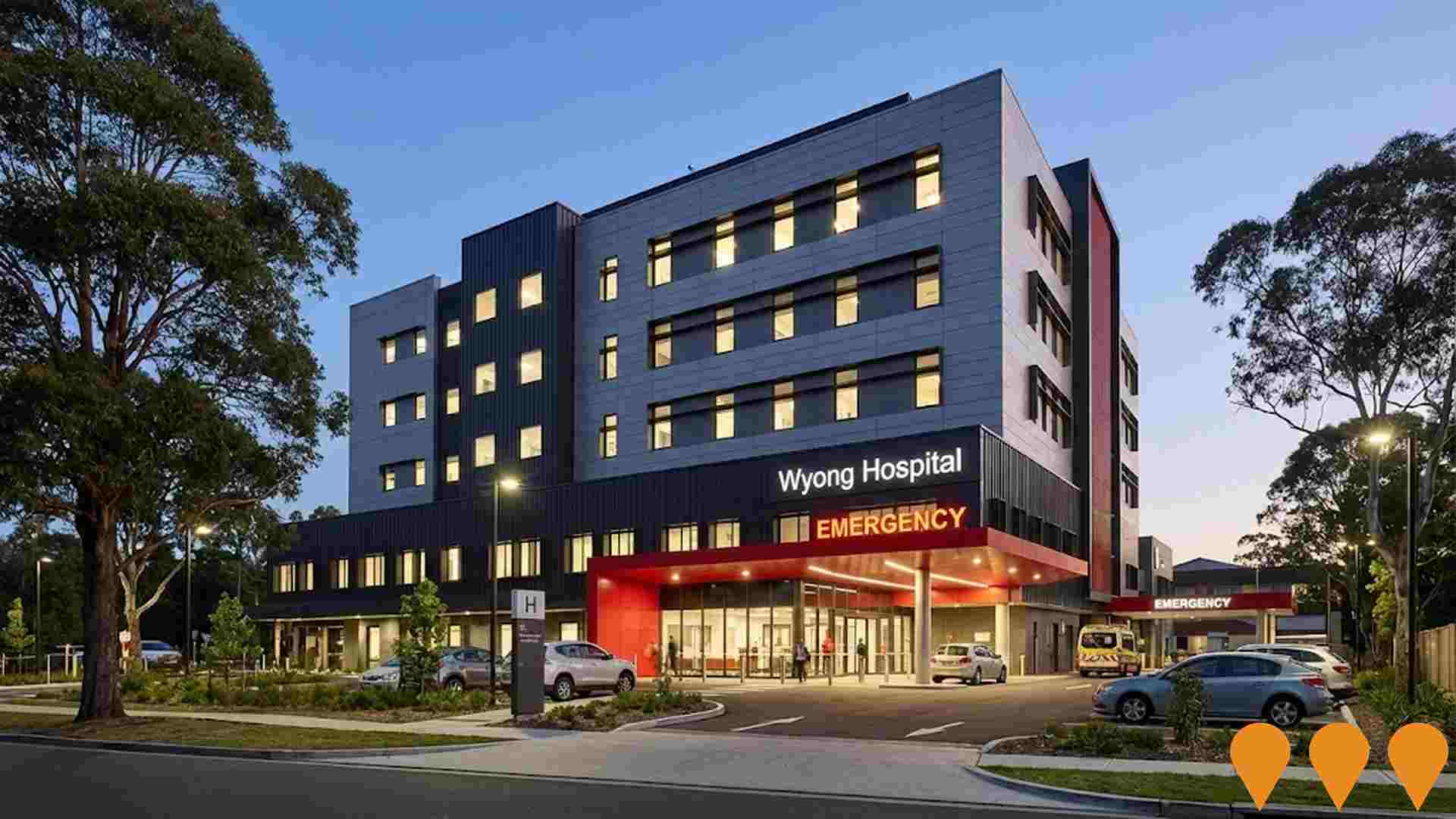
Tumbi Umbi/Killarney Vale Priority Growth Precinct (Planning Proposal)
Central Coast Council-identified priority growth precinct for future medium-density housing and mixed-use development along Wyong Road to accommodate population growth. The project is a Planning Proposal for a Strategic Growth Corridor, which is a key component of the region's overall planning framework to deliver housing, jobs, and infrastructure. It is currently in the Planning stage, consistent with the Central Coast Regional Plan 2036.
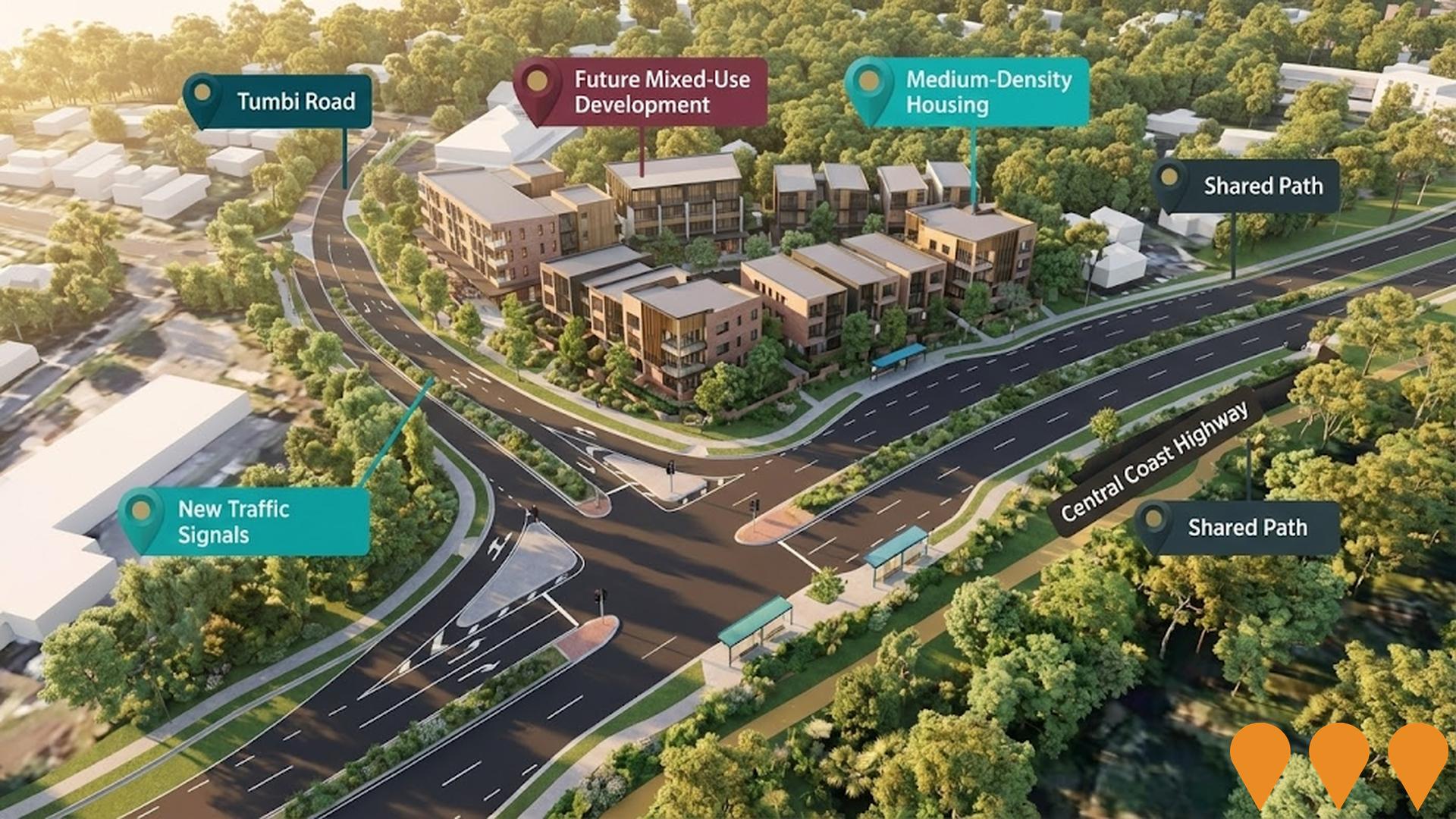
Wyong South Sewage Treatment Plant Upgrade
Major upgrade and expansion of the Wyong South Sewage Treatment Plant to increase capacity, improve treatment processes and environmental performance for the growing Central Coast population and support population growth in the northern Central Coast region.
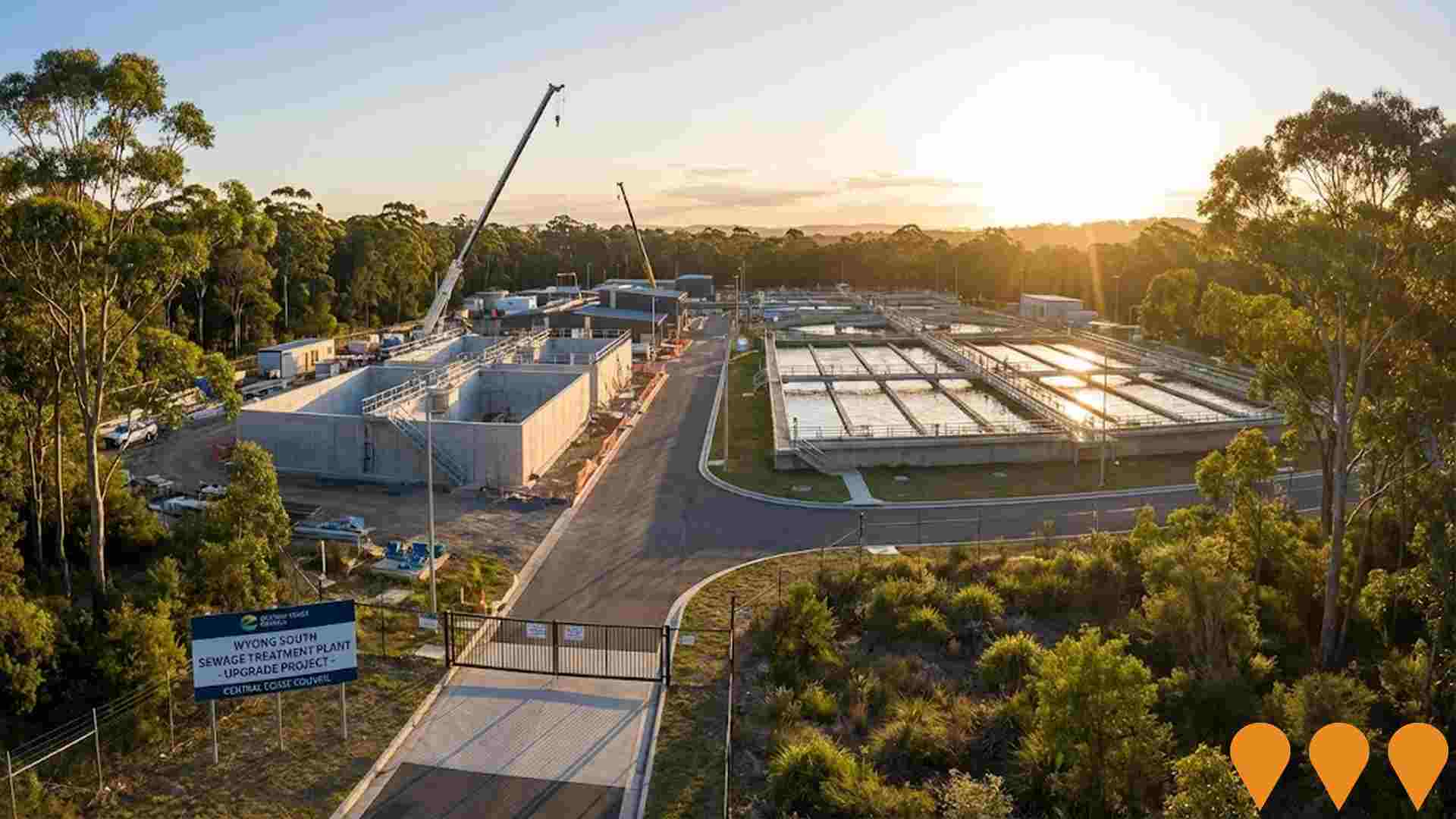
Killarney Vale Masterplan Community - Eastern Release Area
A large master-planned residential community on the eastern side of Wyong Road featuring over 400 completed homes, parks, and community facilities developed by multiple builders.
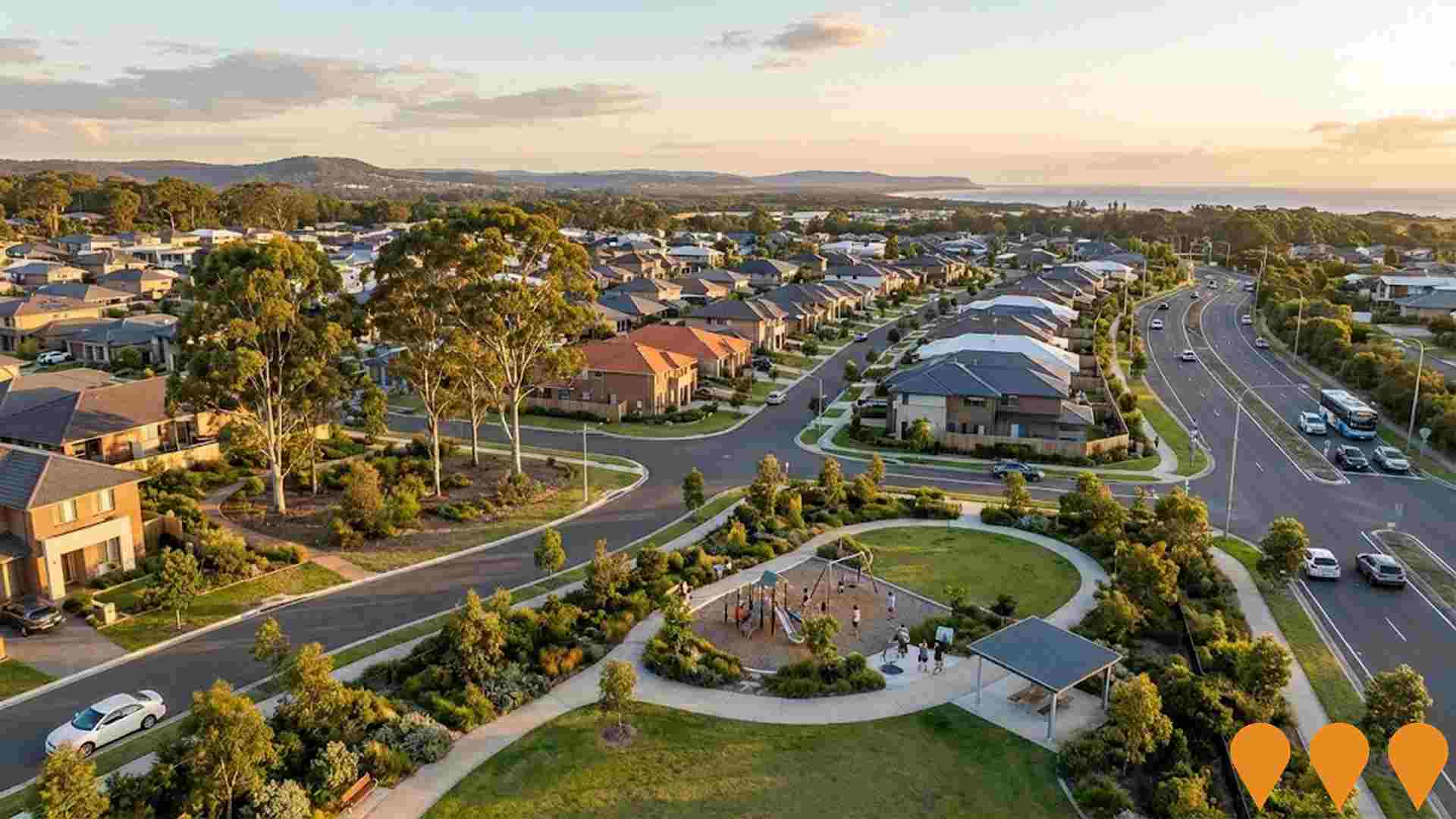
Berkeley Vale Industrial Estate Expansion
Expansion of the existing Berkeley Vale Industrial Estate along Enterprise Drive, delivering serviced industrial lots, new warehouse and light industrial buildings, upgraded internal roads and services close to the Wyong Road intersection and the M1 Motorway. Several sites within the estate, including 5 Enterprise Drive, are being marketed and developed for factory, warehouse and logistics uses.
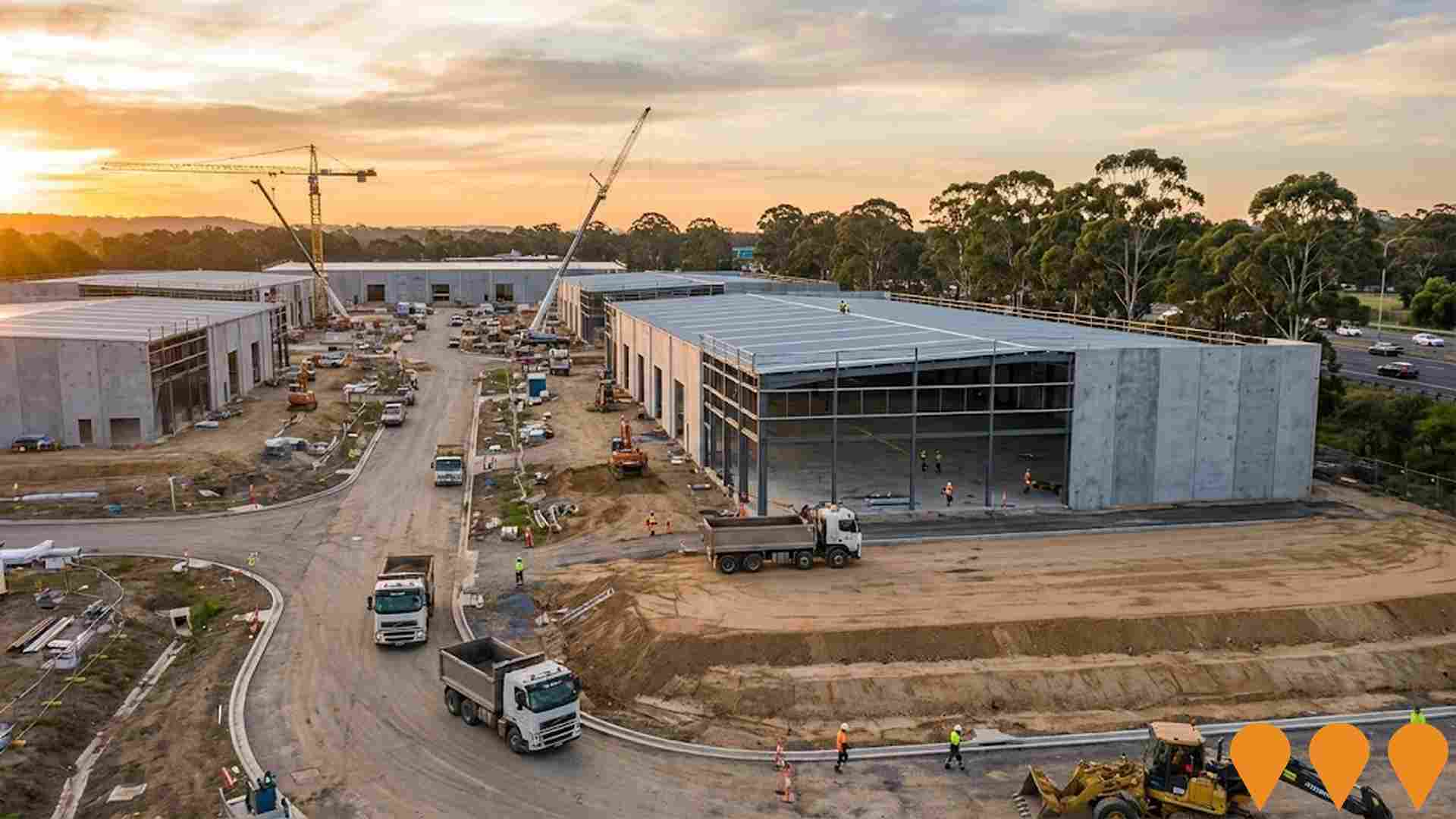
Employment
The labour market in Chittaway Bay - Tumbi Umbi shows considerable strength compared to most other Australian regions
Chittaway Bay - Tumbi Umbi has a skilled workforce with an unemployment rate of 2.7% as of June 2025. This is 1.5% lower than Greater Sydney's rate of 4.2%.
The area had employment growth of 2.1% in the past year, higher than Greater Sydney's 2.6%. Key industries include health care & social assistance, construction, and retail trade. Construction is particularly prominent with an employment share 1.6 times the regional level. Professional & technical services employ just 5.3% of local workers, below Greater Sydney's 11.5%.
The area appears to have limited local employment opportunities as indicated by Census data. Between June 2024 and June 2025, employment increased by 2.1%, labour force by 2.7%, raising the unemployment rate by 0.6 percentage points. In Greater Sydney, employment grew by 2.6%, labour force expanded by 2.9%, and unemployment rose by 0.3 percentage points. Jobs and Skills Australia's national employment forecasts from May 2025 suggest Chittaway Bay - Tumbi Umbi's employment could grow by approximately 6.5% over five years and 13.5% over ten years, based on industry-specific projections.
Frequently Asked Questions - Employment
Income
Income levels align closely with national averages, indicating typical economic conditions for Australian communities according to AreaSearch analysis
AreaSearch's latest postcode level ATO data for financial year 2022 shows that median income in Chittaway Bay - Tumbi Umbi is $49,485, with average income at $61,529. Nationally, these figures are lower than the average. Greater Sydney's median income is $56,994 and average income is $80,856. Based on Wage Price Index growth of 12.61% since financial year 2022, estimated incomes as of September 2025 would be approximately $55,725 (median) and $69,288 (average). Census 2021 income data indicates that household, family, and personal incomes in Chittaway Bay - Tumbi Umbi are around the 50th percentile nationally. Income distribution shows that the $1,500 - 2,999 bracket dominates with 34.6% of residents (5,797 people), similar to the surrounding region at 30.9%. High housing costs consume 16.3% of income, but strong earnings place disposable income at the 53rd percentile. The area's SEIFA income ranking places it in the 5th decile.
Frequently Asked Questions - Income
Housing
Chittaway Bay - Tumbi Umbi is characterized by a predominantly suburban housing profile, with ownership patterns similar to the broader region
In Chittaway Bay - Tumbi Umbi, as per the latest Census, 88.0% of dwellings were houses and 12.0% were other types such as semi-detached homes, apartments, or 'other' dwellings. This compares to Sydney metro's figures of 83.2% houses and 16.7% other dwellings. Home ownership in the area was at 34.8%, aligning with Sydney metro's level. The remaining dwellings were either mortgaged (46.6%) or rented (18.6%). The median monthly mortgage repayment in Chittaway Bay - Tumbi Umbi was $2,000, exceeding the Sydney metro average of $1,900. The median weekly rent figure stood at $425, compared to Sydney metro's $385. Nationally, Chittaway Bay - Tumbi Umbi's mortgage repayments were higher than the Australian average of $1,863, and rents were substantially above the national figure of $375.
Frequently Asked Questions - Housing
Household Composition
Chittaway Bay - Tumbi Umbi has a typical household mix, with a higher-than-average median household size
Family households account for 76.8% of all households, including 34.8% couples with children, 28.0% couples without children, and 13.2% single parent families. Non-family households constitute the remaining 23.2%, with lone person households at 20.9% and group households comprising 2.3%. The median household size is 2.7 people, which is larger than the Greater Sydney average of 2.5.
Frequently Asked Questions - Households
Local Schools & Education
Educational outcomes in Chittaway Bay - Tumbi Umbi fall within the lower quartile nationally, indicating opportunities for improvement in qualification attainment
The area's university qualification rate is 18.0%, significantly lower than Greater Sydney's average of 38.0%. Bachelor degrees are the most common at 12.9%, followed by postgraduate qualifications (3.2%) and graduate diplomas (1.9%). Vocational credentials are prevalent, with 43.3% of residents aged 15+ holding them, including advanced diplomas (11.1%) and certificates (32.2%). Educational participation is high at 27.5%, comprising primary education (9.9%), secondary education (7.5%), and tertiary education (3.4%).
The area's 5 schools have a combined enrollment of 2,268 students, serving balanced educational opportunities with ICSEA score of 980. There are 3 primary and 2 secondary schools providing education for distinct age groups.
Frequently Asked Questions - Education
Schools Detail
Nearby Services & Amenities
Transport
Transport servicing is moderate compared to other areas nationally based on assessment of service frequency, route connectivity and accessibility
Chittaway Bay - Tumbi Umbi has 159 active public transport stops. These are served by a mix of buses operating along 92 routes, offering 1,196 weekly passenger trips in total. Residents enjoy excellent transport accessibility, with an average distance of 178 meters to the nearest stop.
Across all routes, service frequency averages 170 trips per day, equating to about 7 weekly trips per individual stop.
Frequently Asked Questions - Transport
Transport Stops Detail
Health
Health performance in Chittaway Bay - Tumbi Umbi is lower than average with prevalence of common health conditions notable across both younger and older age cohorts
Chittaway Bay - Tumbi Umbi faces significant health challenges, with common health conditions prevalent across both younger and older age cohorts.
Approximately 51% of its total population (~8,478 people) has private health cover, which is relatively low. The most common medical conditions in the area are arthritis (9.6%) and mental health issues (9.1%). Conversely, 64.8% of residents declare themselves completely clear of medical ailments, compared to 61.5% across Greater Sydney. As of 2016 data, 20.7% of residents are aged 65 and over (3,468 people), which is lower than the 22.3% in Greater Sydney. Health outcomes among seniors present some challenges, broadly in line with the general population's health profile.
Frequently Asked Questions - Health
Cultural Diversity
Chittaway Bay - Tumbi Umbi is considerably less culturally diverse than average when assessed alongside AreaSearch's national rankings for language and cultural background related metrics
Chittaway Bay-Tumbi Umbi, as per the 2016 Census, showed lower cultural diversity with 87.3% of its population born in Australia, 92.6% being citizens, and 95.6% speaking English only at home. Christianity was the predominant religion, practiced by 56.6%, slightly higher than Greater Sydney's 56.2%. The top three ancestry groups were English (31.5%), Australian (31.1%), and Irish (8.5%).
Notably, Maltese (1.0%) and Maori (0.7%) were overrepresented compared to regional averages of 1.0% and 0.6%, respectively. However, the representation of Australian Aboriginal was lower at 3.4%, against the regional average of 4.5%.
Frequently Asked Questions - Diversity
Age
Chittaway Bay - Tumbi Umbi's population is slightly older than the national pattern
Chittaway Bay - Tumbi Umbi has a median age of 40, which is higher than Greater Sydney's figure of 37 and marginally higher than Australia's 38 years. The 65-74 cohort is notably over-represented at 10.5% locally, while the 25-34 age group is under-represented at 11.8%. Between 2021 and present, the 75 to 84 age group has grown from 6.4% to 7.4% of the population. Conversely, the 55 to 64 cohort has declined from 13.0% to 11.9%. Demographic modeling suggests that by 2041, Chittaway Bay - Tumbi Umbi's age profile will evolve significantly. The 75 to 84 age cohort is projected to expand by 388 people (31%) from 1,243 to 1,632. Notably, the combined 65+ age groups are expected to account for 86% of total population growth, reflecting the area's aging demographic profile. Meanwhile, the 15 to 24 and 25 to 34 cohorts are expected to experience population declines.

